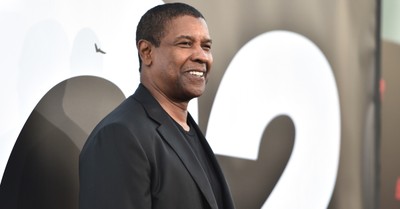Today's Insight - June 4, 2012
Battlefield Memories
by Charles R. Swindoll
On the once bloody battlefield at Saratoga there stands a towering obelisk. A 155-foot-high monument commemorative of that decisive struggle where the British made their last stand over two centuries ago. It is a solemn and sober moment as visitors stand on that windswept hill, savoring that slice of national history. In the distance are the stately Adirondacks and the Taconics. The monument gives mute testimony to those heroes of yesteryear who refused to bow the knee to England. About its base are four deep niches, and in each niche appears the name of one of the American generals who commanded there. Above the names stand giant bronze figures on horseback . . . as famous today as in the day they shouted their commands. You can almost hear their voices. In the first stands Horatio Gates; in the second, Philip John Schuyler; and in the third, Daniel Morgan.
But the niche on the fourth side is strangely vacant. The name appears, but the soldier is absent. Conspicuously absent. As one reads the name, the mind rushes on to the foggy banks of the Hudson where the man sold his soul and forfeited the right to be remembered. How the mighty are fallen! The brigadier general who once commanded West Point, the major general who distinguished himself at battles along Lake Champlain, Mohawk Valley Quebec, and Saratoga, committed treason and died a synonym of disgrace—the infamous Benedict Arnold.
There is another empty niche, far more famous and in sharp contrast to that monument in the state of New York. It, too, stands in memory of a battle, but not the kind fought with guns and bayonets. This niche is actually a tomb . . . a place that once held a body, in fact, the most significant body that ever housed a human soul. The tomb was borrowed, appropriately, and "used" for only a few hours. But in perfect fulfillment of Scripture, it enveloped the dead Messiah.
The battle against sin had been bloody and treacherous. Anyone who had the courage to visit that tomb shortly after it was sealed would certainly have wept bitterly. The battlefield, strewn with the litter of an awful fight, was only too vivid in everyone's memory—a small pile of clothing, a spear, a matted network of thorns in the shape of a head, a bloody cross. And those words, those final words the victim uttered, especially that awful scream—
"Eloi, Eloi, lama sabachthani?" (Mark 15:34)
But what appeared to be defeat was actually the preface of victory. That ugly, rugged cross took its toll, but it failed to have the final voice.
Deep in the silence of night, against all odds and in mockery of strong-armed soldiers, that victim became the Victor. "Up from the grave He arose, with a mighty triumph o'er His foes." Or, as Charles Wesley wrote of that Easter-morning miracle:
Love's redeeming work is done, Alleluia!
Fought the fight, the battle won, Alleluia!
Death in vain forbids Him rise, Alleluia!
Christ has opened paradise, Alleluia!
The bloody battlefield paled into a misty memory as the tomb opened its jaws for all to enter. Death could not keep its prey . . . He tore the bars away . . . He came back from beyond.
Every year the empty niche makes its own bold proclamation. Etched into the stone is a Name that is above every name, the gentle Conqueror, the King of Kings, the sovereign Lord.
On Easter Sunday we shall again visit that historic battleground. We won't find Him there on a cross or standing tall as a bronzed statue. For "He is not here . . . He has risen, just as He said" (Matthew 28:6).
Let's meet at the monument and let's think about Him. And reflect on His victory. And remember His Name as we worship near that windswept hill called Calvary.
Used with permission. All rights reserved.
Listen to today's broadcast of Insight for Living with Chuck Swindoll at OnePlace.com.
Visit the Bible-teaching ministry of Chuck Swindoll at www.insight.org.

















